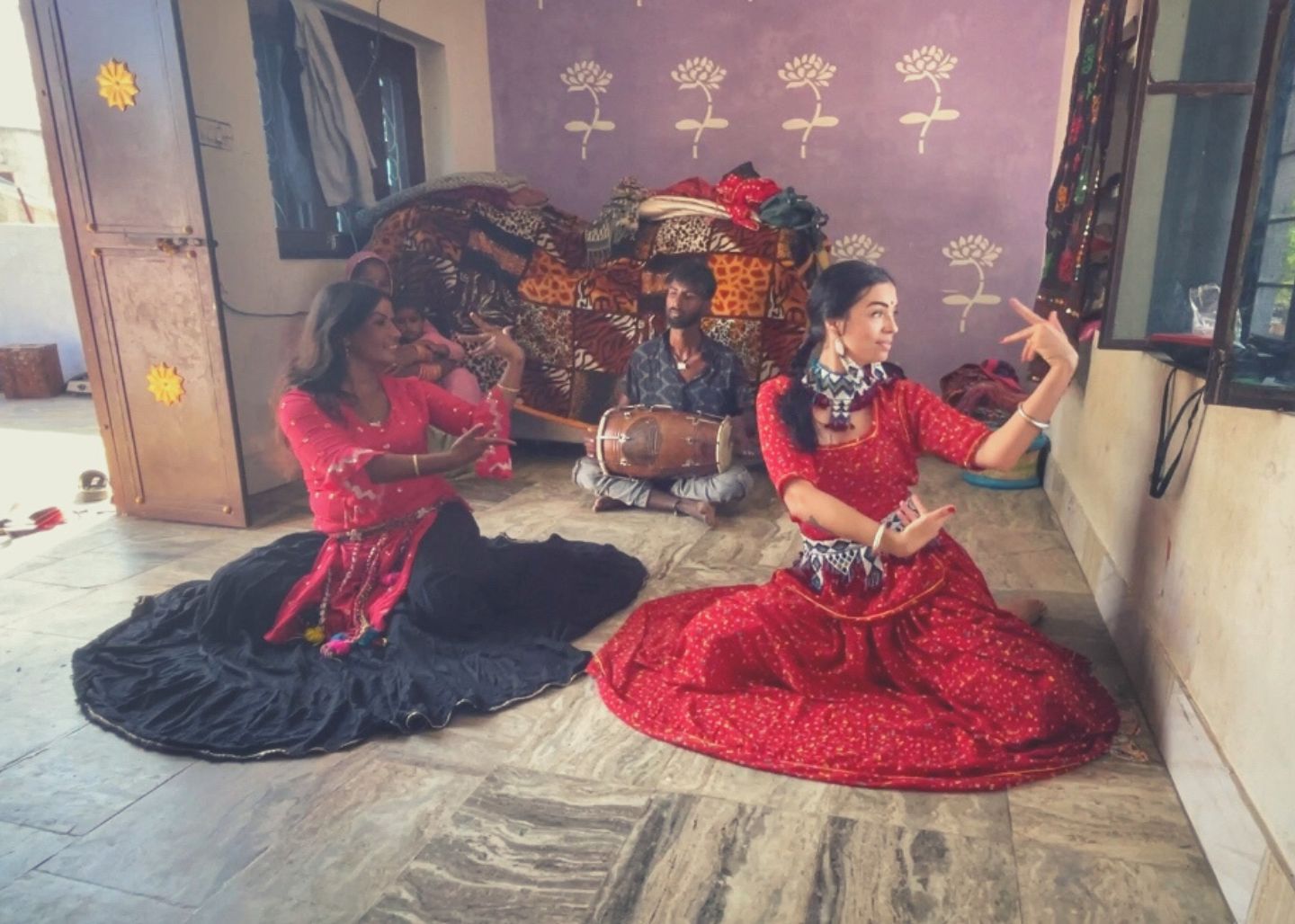
I’m celebrating ten years since I’ve started practicing the Kalbelia dance. I’m celebrating the fact that this dance helped me understand in depth a living community. I’m celebrating that my body has been adapting, finding new paths towards movement and assimilating this art form I adore. I’m celebrating the culture of the peoples of Rajasthan. That is why this post is about Kalbelia dance alive art.
The first time I saw Kalbelia dance was in the gorgeous movie (bear in mind that it is a director’s allegory of the nomadic communities) LATCHO DROM, by Tony Gatlif.
I felt imbued by its power, its vitality and the very way of presenting it to the world; a girl, dancing in the desert and spinning in the most mesmerizing way.
I’ve always wanted to travel to India, but it wasn’t until the first time I went to the Shakti School of Dance, where I attended Classical Indian Odissi dance training, that I had the opportunity to live in Rajasthan.
The first contact with the dance only confirmed my suspicions; it was love at first sight.
The Kalbelia dance is practiced only by women of the community known nowadays as the Kalbelia people of the Thar desert. It’s one of the folklore dances of Rajasthan. As its name suggests, it belongs to the people, and therefore involves traditions, culture and context. (If you want to learn more about this, don’t miss my blog on The Kalbelia Dance)
In order to learn this dance, I have attended private lessons with my teachers. Women who were raised along with the dance, since this dance is transmitted from one generation to another, and not precisely explained, but absorbed. Similarly, when attending lessons, you have to be super present and focused, not only to grasp the mechanics of the movements, but to memorize, understand the accents or the travelings. In a nutshell, to be able to understand them and integrate them.
The thing is that the Kalbelia dance is alive. It develops through each one of the women who practice it, sprinkling it with their own nuances, their signature moves, the improvements. It is not limited, but it adapts and transforms.
My last trip to India gave me a chance to explore the evolution of the dance, and be somewhat more involved in the community. I would like to show you a little bit of the classes I’ve been receiving from my teacher Morya Kalbelia.
It is an actual pleasure to feel that the dance is happening at this very moment, improvising almost effortlessly, and how the body and the awareness open a space where you can camouflage among movements and make it look as if we were performing a choreography.
The Kalbelia dance, as we know it nowadays, is nothing similar to what it was in its early stages, in the ‘80, and is expanding unstoppably. It’s in our power to know it, preserve it and present it as it deserves.
Let’s celebrate the culture of the women of Rajasthan!
For three days, my entire online platform will be 25% OFF, so you can freely choose any course, style or practice you wish to explore.
What’s included:
Perfect for dancers who want to choose their own path.